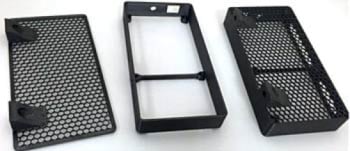
Outer space is an isolated place. Whether you’re an astronaut on an EVA, a satellite in orbit or a deep space probe traversing the solar system, one thing’s for sure, you’re completely cut off from Earth, its resources and the engineers that can solve any unexpected problems that may arise.
For aerospace engineers, this reality confronts them every day when designing systems meant for off-world operation. Although there are a number of critical elements that have to be balanced when building aerospace components, some of the most critical have to do with the rapid and extreme temperature gradients and the resultant electrostatic discharge (ESD). In fact, in some instances, temperature in the vacuum of space can swing from –150°C to +150°C within an hour. If you’re an electronics engineer, those kind of environmental extremes can keep you up at night.
In the past, engineers have mitigated ESD by using a number of surface treatments. Oftentimes, expensive and time-consuming applications of paint, specialized coatings or even conductive tape have been used to address ESD risks in designs. But today, designers have new tools and materials that can help them bring down cost while also eliminating the possibility that ESD could damage critical components.
Additive manufacturing (AM) has been a transformative tool for a number of industries. Aside from the fact that AM can produce component geometries that would be otherwise impossible through conventional manufacturing, the technology can also leverage new material formulations to expand its portfolio of applications.
Case in point, Stratasys Advanced Materials’ announcement of a new aerospace material called ESD PEKK. According to the company, ESD PEKK (dissipative polyetherketoneketone)
combine[s] the unique advantage of ABS-ESD7’s electrostatic dissipative properties, ULTEMTM 9085’s superior strength and thermal properties and the chemical resistance of the PEKK base resin.
ESD PEKK was developed by Stratasys Advanced Materials’ engineers in close consultation with an aerospace customer that required the interplay of the material’s unique combination of properties to complete their designs. Not only did ESD PEKK meet their functional requirements, because the material could be printed, the cost of manufacturing a run of parts was reduced as well.
Although on-demand, bespoke materials are still a burgeoning part of the AM industry, the likelihood of this sector growing in the near future is high. Metal AM machine providers are already expanding their capability to deliver application-specific or customer-driven materials to the market. There’s no reason to believe that plastic AM manufacturers won’t follow suit to develop an even greater variety of purpose-designed materials.
Read more at ENGINEERING.com

